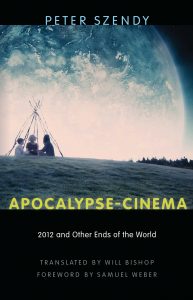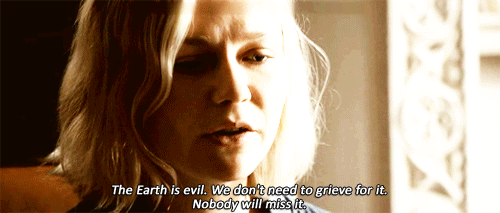In choosing to focus my thesis on the concept of monstrosity and literature of terror in 18th and 19th century Britain, I determined that it is important for me to gain insight into significant events, ideas, or societal changes that inspired fear in the British public in order to analyze the connection that literary monsters may or may not have to the society in which they were formulated. For this reason, the emerging scientific theories of Charles Darwin and Henry Maudsley during the late 19th-century are of significance to my thesis and the concept of societal fear because their theories caused late Victorian Englishmen to express a newfound sense of anxiety about their inability to discern whether one’s degeneration, or gradual loss of morals and virtue, stemmed from one’s social influences or one’s ancestry and biology. It is though gaining insight into Darwin and Maudsley’s theories regarding heredity, genetics, and evolution that one is able to identify the ways in which emerging scientific theories spurred societal terror and helped to mold late 19th-century literary monsters in Britain.
The publication of Darwin’s Origin of Species in 1859, coupled by the work’s surge in popularity towards the end of the 19th century, paved the way for the society and scientists of Britain to work towards accepting the concept of biologically determined moral degeneration (Paul 214). Advocating the validity of “Darwinism,” or the “theory of evolution of species by natural selection,” Darwin’s Origin of Species utilized scientific data to demonstrate that animals and peoples’ traits are passed down from one generation to the next and that each individual is formulated by a culmination of physical characteristics that were previously possessed by familial ancestors (Darwin;Paul 214). This scientific work not only sparked a war between science and religion amongst the late-Victorian population of Britain by fueling confusion about whether or not God plays a direct role in shaping individuals, but undoubtedly caused many Englishmen to fear that their actions and morals were not under their individual control (Kent 667). Similarly, Henry Maudsley’s Body and Mind (1870) also caused a stir among the people of Britain by proposing that “multitudes of human beings come into this world with a weighted destiny against which they have neither the will nor power to contend; they are the step-children of nature” (Maudsley). By stating that a “multitude of human beings” are biologically and inwardly immoral from birth, Maudsley advocates that the possession of an inward deviance is a common plight among people. In this way, these two theories worked collectively to perpetuate the societal fear that certain individuals are born with a predisposition for deviance and immorality that cannot be controlled.
By gaining insight into the prominent scientific theories of the fin de siècle and their impact on the fears held by the British public, I have been able to gain a better sense of the primary novels that I want to work with moving forward and have developed further lines of inquiry that I want to pursue for my thesis. For example, at the start of my thesis journey, I planned to focus my work entirely on Frankenstein, Dracula, and The Goblin Market because I had chosen to define monsters as non-human beings with demonic appearances. Now that I have analyzed these scientific documents, however, I hope to utilize my thesis as a method for connecting monsters to the societal fears that existed during the time period of their inception, enabling me to expand my definition of monsters to one that touches on their ability to embody the social and moral concerns that confronted the people of late 18th and 19th century Britain. For this reason, I plan to also include Wilde’s The Picture of Dorian Gray and Stevenson’s The Strange Case of Dr. Jekyll and Mr. Hyde in my thesis because they treat humans as monster-like figures and directly touch on the societal fear of degeneration that existed during the time of their publications. In addition, this work with primary sources has encouraged me to continue to link literary monsters with the societal fears of Britain regarding issues such as morals, colonialism, gender, and science in order to truly encompass the various facets that make up Britain’s literature of terror in the 18th and 19th centuries. While, ultimately, I will have to narrow my focus to one or two major social themes, this exercise has enabled me to better understand the objective of my thesis, incorporate the historical lens that I had hoped to utilize, and understand the multiple opportunities my topic affords me.
Works Cited
Darwin, Charles and Morse Peckham. The Origin of Species. [Electronic Resource]: A Variorum Text. Philadelphia, PA, University of Pennsylvania Press, 1959. Evidence-Based Acquisition (PALCI EBA) Discovery Record (JSTOR).
Maudsley, Henry, Body and Mind: An Inquiry into Their Connection and Mutual Influence , Specially in Reference to Mental Disorders: An Enlarged and Revised Edition: To Which Are Added Psychological Essays (London: Macmillan (1870) 1873).
Kent, John. “Review.” Rev. of The Post-Darwinian Controversies, by James R. Moore. Journal of Biological Studies 2 Oct. 1980: 667-69. JSTOR. Web. 14 Nov. 2016.
Paul, Diane B. “Darwin, Social Darwinism, and Eugenics.” The Cambridge Companion to Darwin. By J. Hodge and G. Raddick. 2nd ed. London: Cambridge UP, 2003. 214-39. JSTOR. Web. 14 Nov. 2016.


